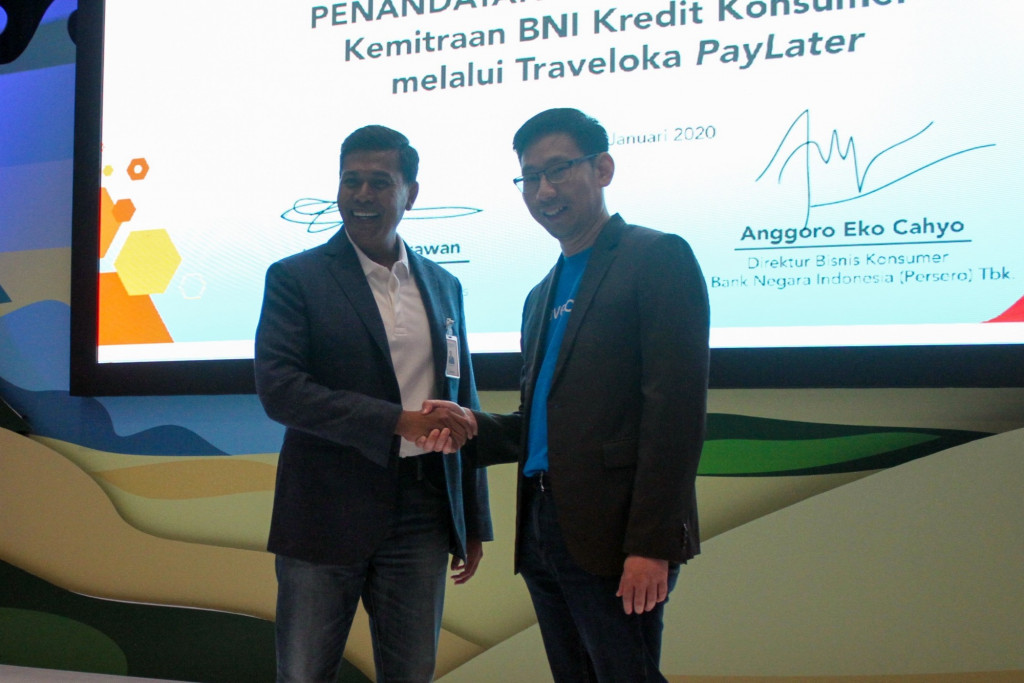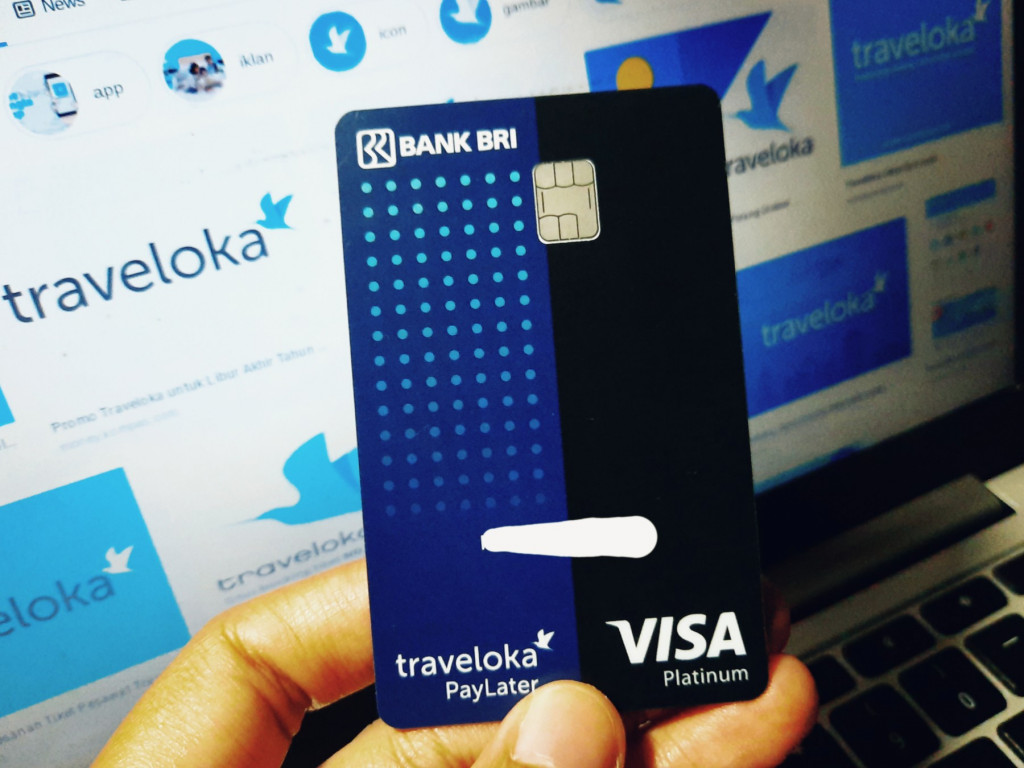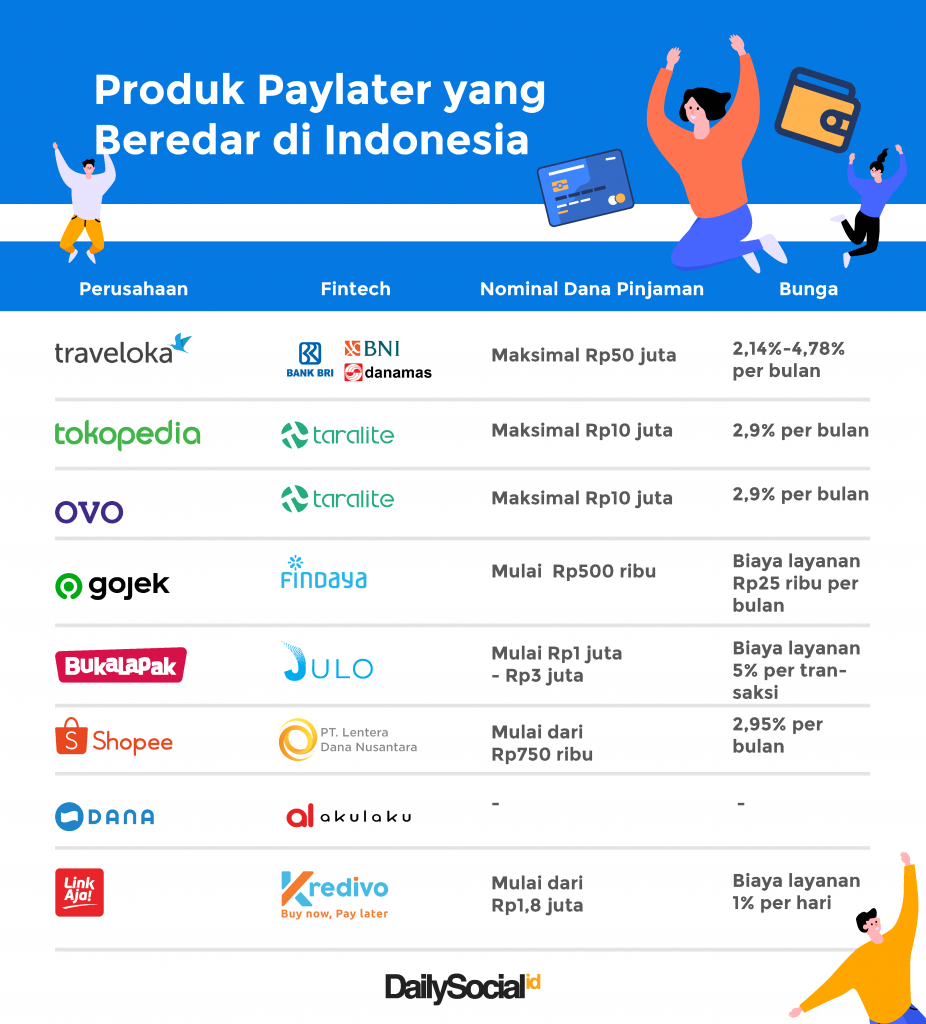"PayLater" Technology Company Boosts Consumer Credit Growth
The development of credit cards is stagnant, technology companies are the best vehicles to solve the issue
Credit cards are premium financial products, but have high exclusivity. Just about to apply, the process is very selective and time consuming. This is reasonable because banks must careful in carrying out its function as intermediate.
Strict banking regulations are the main reason why credit card development here is stagnant. Statistics from Bank Indonesia as of November 2019 explained that the number of credit cards in circulation was 17,38 million units, a slight increase of 0,65% on a yearly basis. year on year. Transaction volume growth only rose 4,19%, while in value it rose 5,32%.
This increase is not as drastic as compared to electronic money transactions. The number of electronic money was 278 million card units, up 66,47% on a year to date. The transaction volume was recorded at 356,4 million units (up 21,93%), with a value of Rp. 127 trillion (up 170,21%).
This inequality makes digital credit card products, or what is now more trendy called PayLater, something very important hits for the last two years.
Everyone is flocking to this segment, attracting fintech lending to offer easy, short applications and the mainstay jargon of 0% interest for 30 days loans is increasingly being used.
Traveloka and PayLater travel products
Several months before GoPay and Egg released PayLater, Traveloka stole it start introduced this term. The premise is simple: we want to shorten the time it takes for consumers to decide on plans to purchase travel tickets and accommodation, without worrying about the availability of funds. The real solution can be answered by a credit card.
In a press conference (15/1), Traveloka Group Operations President Henry Hendrawan explained that before releasing PayLater, 90% of users made purchases last minute aka less than two days before departure. The impact is that the price they have to pay is much more expensive, they cannot choose a seat, and they do not get the accommodation they want.

"During Eid, we see booking usually happens when they have received THR. So we see that PayLater can be an alternative finance planning, planning all holiday plans and booking from a long time ago because the price is definitely much more affordable," he said.
According to him, since PayLater was launched in mid 2018, the biggest use of PayLater has been for payment of travel tickets and hotel accommodation. Next, for payment of attraction and entertainment tickets. Henry was not prepared to provide further details on the size of the transaction regarding this matter.
The maximum nominal funds that users can get when it is first released is around IDR 2 million to IDR 10 million. Now the limit has been increased to IDR 50 million with a tenor of up to 12 months. The interest starts from 2,14%-4,78% flat per month. Almost all services on Traveloka can use PayLater as a payment option.
First partner The one that Traveloka recruited to provide loan funds was Danamas. On the website, it is explained that there is an additional partner, namely Caturnusa Sejahtera Finance, which acts as lender (Actioncalendar) in Danamas. It can be assumed that the PayLater funds given to Traveloka users come from there.
Caturnusa, which is licensed as a p2p lending company, is also affiliated with Danamas, aka being under the auspices of the Sinar Mas Group.
Right on Wednesday (15/1), Traveloka added partners lending. This time it is BNI. Together with BNI, the company has the ambition to distribute loan funds of up to IDR 6 trillion this year to one million Traveloka users.
"The hope is that [PayLater loans] can be distributed to a million PayLater users this year," said Henry.
BNI Consumer Business Director Anggoro Eko Cahyo explained. Through this collaboration, Traveloka PayLater is connected to BNI's KTA product, namely BNI Fleksi. Automatically, every PayLater user will become a BNI customer.
"Through this collaboration, it is hoped that BNI's consumer credit expansion will increase while providing convenience to the wider community, including Traveloka PayLater users who ultimately have the potential to become BNI customers," he said.
Go back to the origins of a physical credit card
BNI's actions in attracting Traveloka are an interesting example of how banks use technology companies as "vehicles" to increase their business. Anggoro explained that BNI's decision to enter as a lender at Traveloka was because he saw the same target consumers.
This strategy is also motivated by the company's desire to boost consumer credit performance at BNI because Traveloka PayLater is also connected to BNI Fleksi. This is a KTA product for the consumption needs of active employees who have a fixed income and whose salaries are paid.payroll by BNI.
According to Henry, the majority of Traveloka users who passed verification for PayLater loans have never had a credit card. The KYC process for each application submission is relatively simple. Traveloka reads user transaction habits recorded in the system.
"The more often we use Traveloka, the easier it will be for us to understand users and maybe we will be more comfortable love limitbecause we know who the users are."
Anggoro said that before this collaboration began, of course BNI carried out a credit risk assessment in the Traveloka system. How they KYC, determines credit score, and others. "We have ensured that it complies with [banking] standards."
"This [assessment result] shows our technical performance in KYC," added Henry.
The history of customer transactions collected at Traveloka becomes a very valuable data bank for building your own credit scoring system. All of Traveloka's efforts to build quality financing finally paid off when a bank like BNI stepped in.
Before BNI entered, BRI also signed an MoU with Traveloka to provide PayLater Card. This facility is offered to selected Traveloka users. As it happens, DailySocial including one of them.

PayLater cards are not much different from credit cards issued by banks in general. The facilities that users can enjoy are free annual fees forever, users will receive notifications from Traveloka every time there is a credit card transaction to make monitoring easier.
Like most credit cards, the limit can be used for online and offline transactions outside the Traveloka ecosystem, including shopping abroad, especially those connected to Visa. The interest given is 2,25% per month and bills can be paid via the Traveloka application.
There is an increase in the credit limit that users receive when usingupgrade to a physical card. The amount depends on the risk profile assessment.
The benefits of the Traveloka partnership between BRI and BNI provide added value that in terms of the system, the quality of technology companies in risk assessment is in line with banking standards. Banks don't need to worry.
In the midst of tight regulations in banking, technology companies can be a "vehicle" to overcome stagnant credit card growth. There will come a time when credit card penetration will increase in that way careful.
Train co-branding credit cards abroad
What Traveloka is doing with BRI is nothing new if you look at it benchmarking abroad. In Singapore, Grab along with MasterCard makes GrabPay Cards. In India, there is Amazon and OTA company MakeMyTrip which has attracted ICICI Bank. Furthermore, in the United States there is Uber with Visa and Apple with Goldman Sachs.
This trend is predicted to continue. There was news circulating about Visa and Gojek are collaborating to release PayLater.
It should be understood that in Indonesia the habit of using credit cards has not yet been formed. The same condition also occurs in China. Credit cards are less popular there, because there are Alipay and WeChat Pay which are friendlier for them.
This is different from the United States and Singapore. Credit card penetration there is already significant, so the strategy of technology companies to create credit cards makes more sense.
Menurut PwC report, strategy co-branding credit cards are a strategy win win, good for the company and issue (issuing bank). From the side issue, they will gain access to a segmented customer base, increase average transactions, lower dormant account rates, and increase "stickiness" with consumers.
For partners, they get better brand visibility, top contributions and Bottom line through shared income, and increasing consumer loyalty. Meanwhile, for card holders, they get special offers such as discounts or vouchers, free film benefits, travel, overnight stays, and additional benefits for insurance, access lounge, and so forth.
Sign up for our
newsletter
 Premium
Premium


